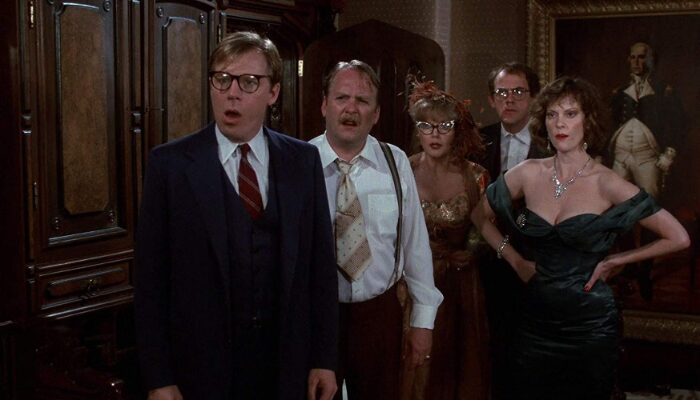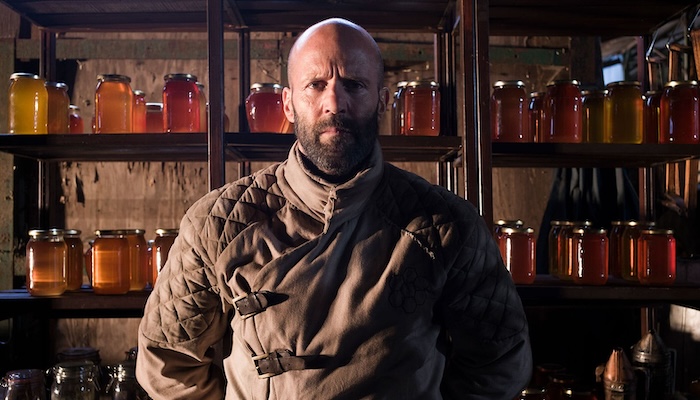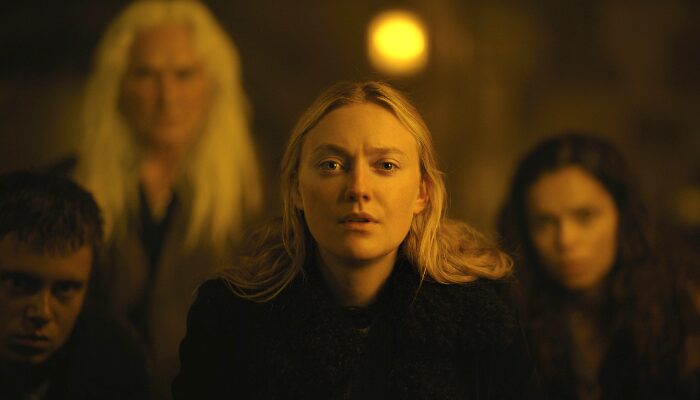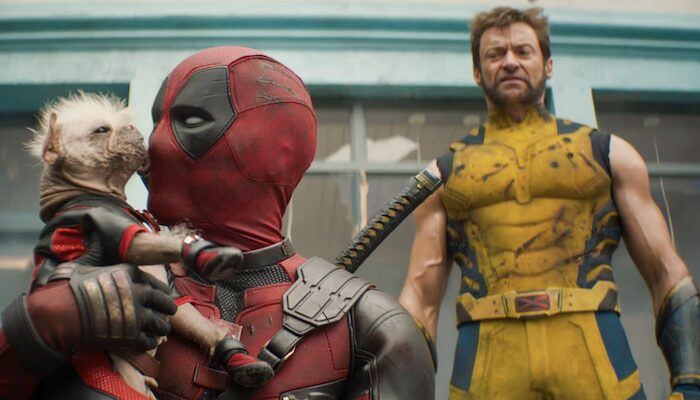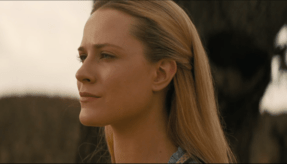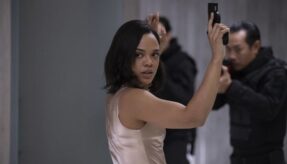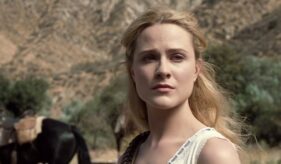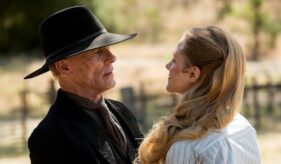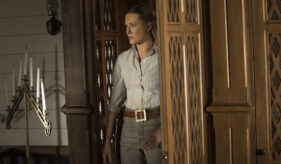TV Review: WESTWORLD: Season 1, Episode 2: Chestnut [HBO]
Westworld Chestnut Review
HBO‘s Westworld: Season 1, Episode 2: Chestnut introduced viewers to the user experience of Westworld, the growing threat of the Host anomaly, and two subplots growing in the background of the main storyline. Westworld first-time visitor William (Jimmi Simpson) was the bridge character for the audience in Chestnut. As he was introduced to the user experience of Westworld and its back-end (e.g. custom-sized clothing waiting for the visitors, which bespoke of the wealth needed to visit Westworld in the first place), so was the viewer. As the wide-eyed, innocent bridge, William could not be sexually tempted by the most alluring of Hosts. It was like he was sight-seeing in Westworld, not wanting to take part in anything, content to obverse and have simple conversations with its inhabitants.
From the way the Westworld experience is presented, Westworld is a theme park that almost everyone on the planet would want to visit. From beginning-to-end, the user experience was the chief concern of its designers. From the moment a visitor stepped off the train at Westworld, their enjoyment was of paramount importance. It was very evident that just as much time and care had been put into the world inside Westworld as in the amenities that proceeded entry into Westworld.
Chestnut will fill some viewers with a tangible longing – Why can’t Westworld be an actual theme park? Why can’t I visit it? The mere presence of those feelings speaks volumes about the quality of writing in the first twenty minutes of Chestnut.
Maeve Millay (Thandie Newton) waking up outside Westworld was the beginning of the best scene in Chestnut. Upon awakening, she was blasted by unfamiliar stimuli that she couldn’t even process but because of the sensory / perception upgrades by behavior engineer Elsie Hughes (Shannon Woodward), she assessed and tried to extricate herself from the lion’s den to safety.
Watching Maeve staggering, holding her wound yet not dying from it, was surreal to her. She was obviously in pain yet kept moving, kept trying to get away from the strangers she had awoken to. Westworld founder Dr. Robert Ford (Anthony Hopkins) had evidently placed the desire for self-preservation into all his Hosts or at least into some of the characters they portrayed.
When Maeve entered the dead host undressing / washing / clean-up area, all motivation to save herself evaporated, bringing her to her knees. This area of Westworld featured the brutality and casual barbarism found on the slaughter ships in David Mitchell‘s book Cloud Atlas.
Horror and disbelief came at Maeve all at once as she stared at the men going about their work. It was etched on her face. No words were needed. She was in the most terrifying moment of her life.
When you hire an actress of Newton’s grade, who is capable of carrying an important TV or film scene, the aforementioned scene in Chestnut is the result.
There were unanswered questions that lingered at the end of Maeve’s scene. When Maeve looked at those clear glass rooms, at a particular dead body in one of them, did she realize: a.) that the dream that she thought she had was real? or b.) that the real world was even more nightmarish than the society in Sweetwater?
It was not disclosed what her realization was. Perhaps the institutional horror of what was going on in front of her was disturbing enough.
Like the Maeve scene, Chestnut employed a number of effective narrative techniques. The first was foreshadowing. Westworld’s Head of Programming, Bernard Lowe (Jeffrey Wright), and Westworld’s Head of Quality Assurance, Theresa Cullen (Sidse Babett Knudsen), spoke about the hosts talking to each other, even when no one was around. Later in the episode, Dolores Abernathy (Evan Rachel Wood) spreads the anomaly that her father infected her with to Maeve after randomly bumping into Maeve on the main thoroughfare of Sweetwater. Elsie Hughes was right in her suggestion to Lowe about taking Dolores out of play. Lowe should have examined Hughes’ suggestion more closely but then again, his own agenda was already on-going.
Lowe’s bland character was layered in Chestnut by his non-objectivity to Dolores and the anomaly. His secret scrutinization and study of Dolores clouded his judgement. His fascination with Dolores’ changing thought-pattern brought his thought-pattern into question. Lowe risked being fired by not telling Dr. Ford and management about the evolving mind of Dolores. It would have been extremely prudent if Dolores was “boxed” like her father but then Lowe wouldn’t have been able to observe Dolores in play. “Have you done something wrong?” When Dolores asked such an intuitive question, it was chilling. Lowe was playing a potentially dangerous game.
The Dolores / Lowe secret meeting was the first of two subplot introduced into Westworld through Chestnut.
The second subplot was the search for a new storyline for Westworld’s Hosts to act out. That subplot possibly connected three storylines: 1.) Programmer Lee Sizemore (Simon Quarterman)’s gory melodrama script, 2.) Dr. Ford out in the park alone thinking then with Lowe, 3.) and The Man in Black looking for the entrance to “The Maze.” Sizemore’s proposed storyline was hilarious. Spoiled by authority, Sizemore sought Ford’s parental approval, like a child, while talking about Ford and his failing faculties behind his back. It was a strange dichotomy at play.
Ford’s new script and The Maze, I believe, are one and the same. Ford has been working on his new storyline for sometime. The Man in Black has been aware of The Maze’s existence for sometime (at least since his last visit to Westworld). Since The Maze was kept mysterious in Chestnut, except for the little girl (Izabella Alvarez)’s creepy Maze entrance announcement, there is no definitive way of knowing yet. What was revealed about The Man in Black in Chestnut was that he was someone of importance, possibly someone of immense wealth and influence. Westworld was where he came to be himself, the self that he controlled and kept hidden in the outside world.
Leave your thoughts on this Westworld Chestnut review and this episode of Westworld below in the comments section. Readers seeking more TV show reviews can visit our TV Show Review Page, our TV Show Review Twitter Page, our TV Show Review Facebook Page, and our TV Show Review Google+ Page. Readers seeking more Westworld can visit our Westworld Google+ Page. Want up-to-the-minute notification? FilmBook staff members publish articles by Email, Twitter, Tumblr, Google+, and Facebook.
Related Articles
FilmBook's Newsletter
Subscribe to FilmBook’s Daily Newsletter for the latest news!

